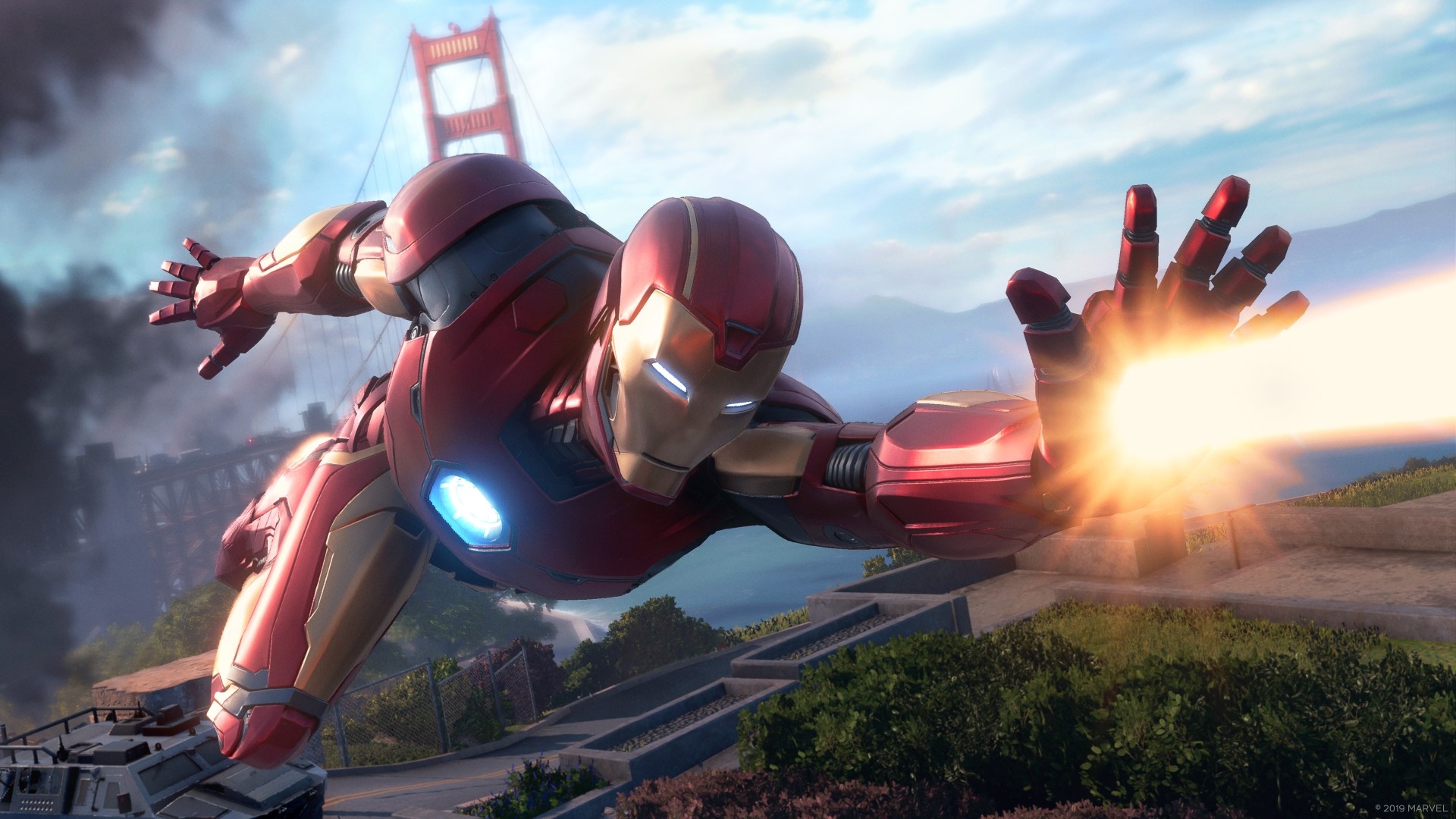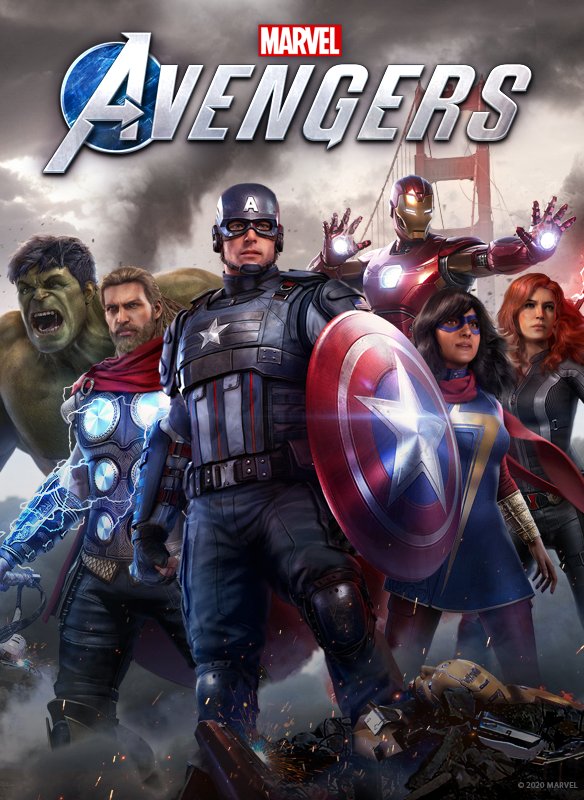You can trust VideoGamer. Our team of gaming experts spend hours testing and reviewing the latest games, to ensure you're reading the most comprehensive guide possible. Rest assured, all imagery and advice is unique and original. Check out how we test and review games here
The first thing to know about Marvel’s Avengers is that it makes sense. Not in the traditional way, of course; its plot, for instance, is balderdash. San Francisco is sprayed with Terrigen Mist, which—despite sounding like something Heston Blumenthal would unleash on a table of brave diners—happens to sprinkle some members of the general population with superpowers, sparks the rise of a spurious scientific organisation, and breaks up the Avengers. All of which calls for the reassembling of the Avengers. But where things fall into place is in your hands. If you’ve sat through the retinal assault of a Marvel movie and thought that the action had the same essential qualities as the coke-and-popcorn combo you just bought—the fleeting rush of syrup meeting bloodstream, ebbing into achy hunger—then the game will feel substantial. Like a hot dog, say, or one those warm racks of nachos with freshly microwaved cheese goo.
The first ten minutes see the Golden Gate Bridge buckle and burst into flames, while a militia, steeled with high-tech weaponry, descends on the ensuing chaos like wasps to a garden party. The heroes—composed of Iron Man, Hulk, Captain America, Black Widow, and Thor—spring into action, and we play as each in turn, swooping to the next the way the camera roves after them in the films. Thor single-hammeredly wrecks a squad of trucks; Hulk bounds between islands of rubble; Iron Man zooms and loops above; Captain America brawls aboard the deck of an aerial fortress; and Black Widow, brandishing a pair of crackling gauntlets, clobbers a smug villain by the name of Taskmaster.
It’s a breathless intro, and there are a couple of crafty techniques at play. The sequence uses quick time events as industrial-strength adhesive, sticking strips of action together and refastening your attention just as it flags amid the fray (a tactic the movies can’t employ). It’s strange to think that the same mechanic Yu Suzuki used to jolt the idle days of Shenmue with a little dynamism is now being wielded to retether the super-dynamic to the Earth—and to jolt us the moment we start to idle. The second trick is physical. The developers at Crystal Dynamics and Eidos Montreal have cranked the rumble function in the controller to experimental levels, and, as the scenery was eagerly crunched, the DualShock ground my palms to jelly. I sat back as if I had gripped the rail of a theme park ride. It’s one of those opening set pieces that either sets the mood of the piece or ends up as a piece set apart from the rest—a memory that outshines the surrounding murk.
So, which will it be? Well, after playing a closed beta over the weekend (there’s another one, for people who have pre-ordered the game, running August 7-9, and then, taking after the movies, there’s another after that and then another after that), I’m not yet ready to say. What I can report is that the single-player campaign, wherein each hero is lavished with a solo slice of the limelight, is a far more enticing prospect than buddying up: surely not ideal for a game that hymns the merits of costumed chummitude. The plot follows Kamala Khan, a woman whose limbs can stretch and swell, like a superpowered budget, to fit the occasion. She and Dr Bruce Banner, along with his big angry subconscious, are on the trail of a missing Tony Stark, taking the pair to the Pacific Northwest, through a thick forest, and then to a snowbound base in Russia.
These story-centred chapters have an odd, flighty feel, peppered with jargon-stuffed objectives. I was never sure quite what it was that we were doing in these places, but the developers, Crystal Dynamics and Eidos-Montréal, have wisely treated Hulk’s monosyllabic catchphrase as a roaring rule of thumb. And, sure enough, you’re provided with a constant stream of smash-worthy obstacles, be they doors, chunks of smoking debris, or, most often, human bodies, sheathed in futuristic armour. It’s not long before the baton is passed; a woodland trail of carnage, with Hulk, soon shifts to an infiltration mission, with Kamala, generously stocked with carnage of a more elasticated kind. These levels are linear, furnished with intriguing detail, and fitted for a single Avenger. The other missions are set in sprawling arenas, designed for group fun, and they lose focus.
Each mission, be it main or side, is accessed from the War Table—think of a regular table, add a shimmering, globe-shaped hologram, and you’re there. There are Hero Missions (in which the main story unfolds), War Zones (replayable co-op affairs akin to the Strikes from Destiny), Drop Zones (snappier versions of War Zones, for those who like to cram their avenging into ten-minute slots), and H.A.R.M. Rooms (training simulations on a Star Trek-style Holodeck). Just before each mission begins, players tinker with their gear and choose their character. This is one of the highlights, not for the gear itself (which I was relieved to find can be dispensed with the “equip best gear” button) but for the heroes, who stand restlessly in a humming hangar aboard their airship, fiddling with their belts or sitting in silence while the quest loads: a rare peek into moments of superboredom.
Down on the ground, the combat is a thumping alignment of light and heavy punches, long range attacks, and high-powered specials—all in the flavour of your chosen fighter: Hulk tosses rocks, Black Widow fires up her pistols, Iron Man fires up his palms, and so forth. It’s a satisfying stew of moves, and the stars, while well furnished with their own funky blessings—Iron Man and Thor can fly, while Kamala coils through levels like a rubber band and billows to car-stomping size—all roughly resemble one another in their capabilities, by simple virtue of being bound within the lacquer of the same game. This is the trouble with teamwork. I felt a thirst for texture: for the thwipping, punchy lightness of Spider-Man, or the credible bulk of Batman, both of whom have, in the last few years, dwelled at the heart of their own games. Here the characters’ edges have been cropped to fit them in the frame of a shared adventure. It’s like one of Marvel Studios’ “phases” playing out in reverse; rather then a string of films strewn with marketing buzz for the big meetup, Marvel’s Avengers is a blockbuster trailer offering glimpses into games that may never be.
Marvel’s Avengers
- Platform(s): Google Stadia, PC, PlayStation 4, Xbox One
- Genre(s): Action





